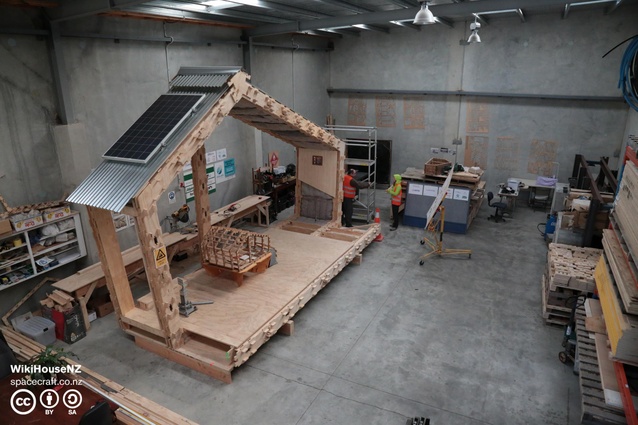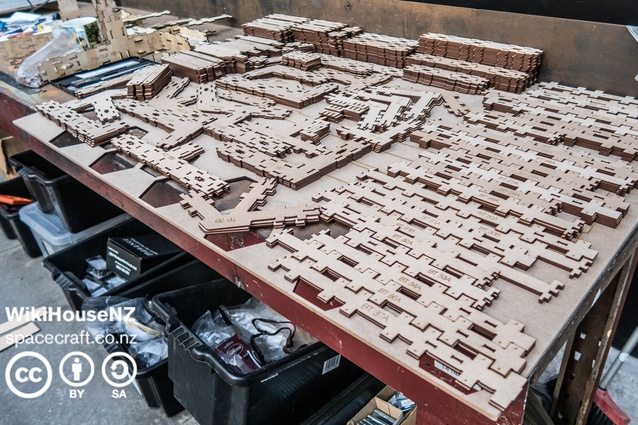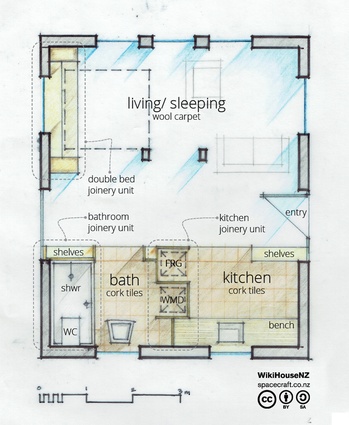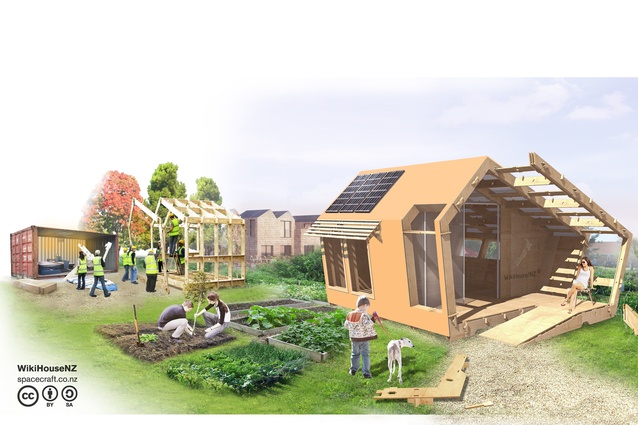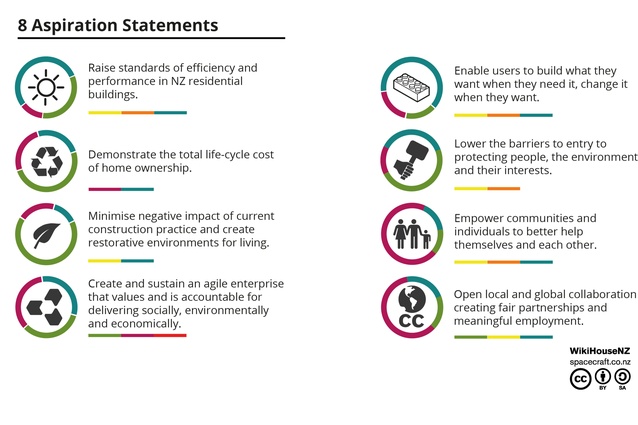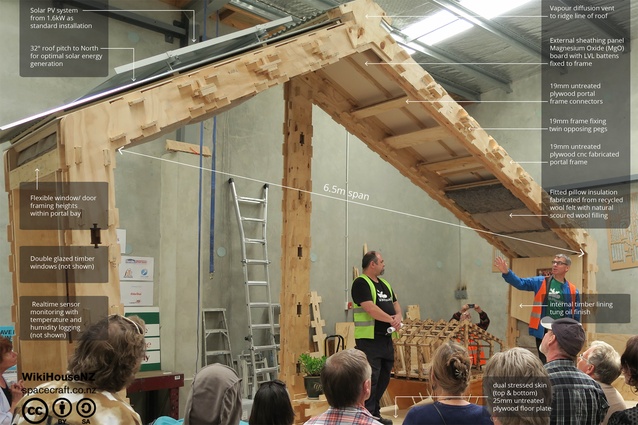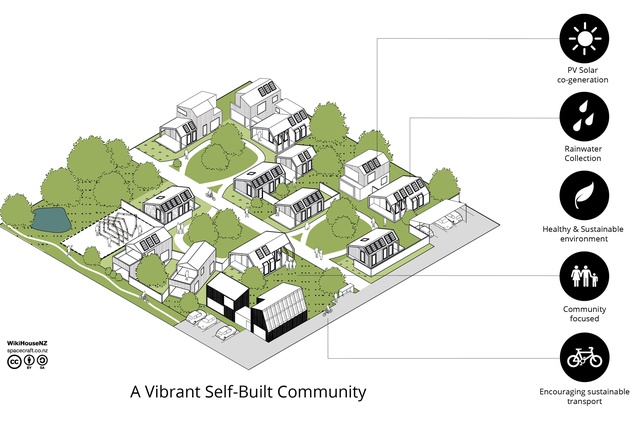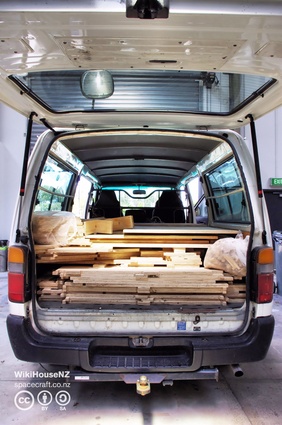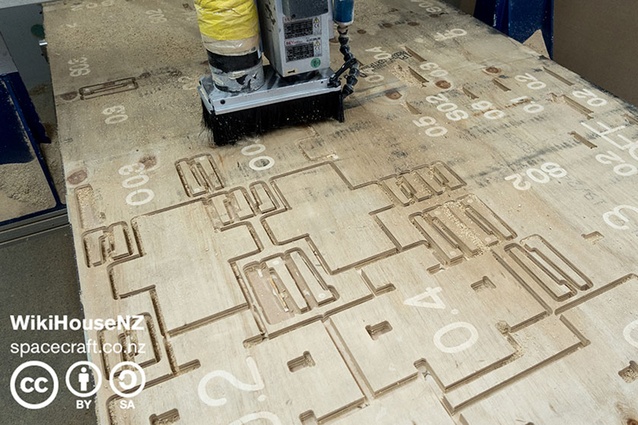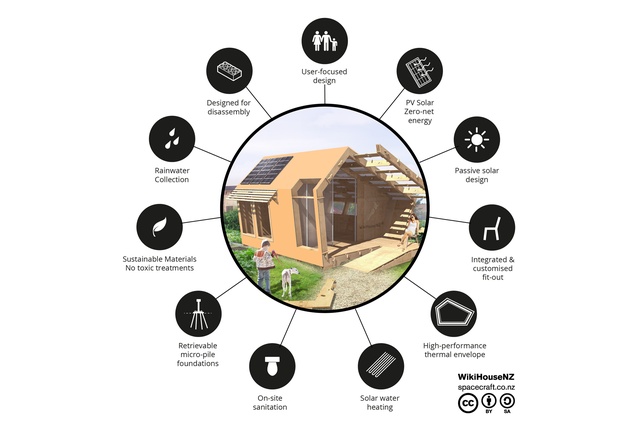Print your own house: WikiHouse in New Zealand
WikiHouse is an open source construction system that aims to reinvent the way we make homes. A WikiHouse is fabricated from locally sourced plywood cut on a CNC mill from openly shared template files, and assembled with minimal skill by local people. It is sustainable, adaptable digitally-designed housing that aims to strengthen communities by allowing them to come together to create and build.
Since inception in 2011, dozens of WikiHouse chapters have been subsequently set up around the world, which are collectively feeding back experience and improvements.
Amelia Melbourne-Hayward visited the Christchurch ‘WikiLab’ workshop of social enterprise Space Craft Systems, which was set up to develop WikiHouse in New Zealand. Here, she chats with co-founders Danny Squires and Martin Luff.
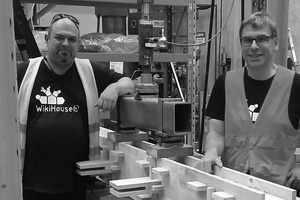
Amelia Melbourne-Hayward: Where and how did WikiHouse first get started?
Danny Squires (DS): The earliest precursor of a system that’s very close to WikiHouse was created by Larry Sass at MIT. He did some work in the 2000s around CNC fabricated housing, attempting to find emergency housing solutions post-Hurricane Katrina.
WikiHouse itself started in the UK in 2011, with Alastair Parvin and Nick Ierodiaconou from architecture practice Zero Zero. Nick also co-founded Opendesk, which is a global open source office furniture platform that is doing quite well now.
Initially WikiHouse was just a research paper which one of the most influential tech media commentators in the UK discovered and then featured on Wired and CNN. At that point, Zero Zero decided to see if it actually was possible to create an open source hardware construction cube. The first WikiHouse was constructed in South Korea at the Gwangju Design Biennale 2011 and they released it with a Creative Commons license shortly after.
AMH: How did you get involved with the project?
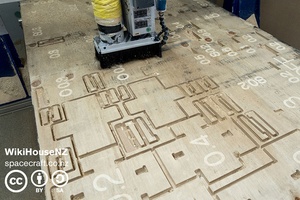
Martin Luff (ML): After the Christchurch earthquakes in 2011, Danny and I got together to look for a chance to create housing that’s far better than what we currently have. We asked ourselves, “Are we just going to build in the same old fashion – which essentially we have done in a lot of ways – or are we going to take this opportunity to bring housing and building into the 21st century with equal social, environmental and economic outcomes?”
We stumbled across WikiHouse through social media and quickly realised that it potentially ticked all the boxes, so we contacted Zero Zero and said we’d like to create a lab here in New Zealand. We were the first team outside the founding company in the UK to step up, and we’re recognised as global co-founders now.
DS: We created Space Craft Systems both as a social enterprise and to develop WikiHouse in New Zealand, so we wear two hats. The WikiHouse platform is radically different to what currently exists and that’s by design, because we think that in order to break out of the mould of what we have now it needs to be radical.
AMH: What were you both doing before this venture?
DS: I’d left architecture years before because I was disillusioned with the [in]ability to make any real social and environmental changes. It’s still pretty tough today for a lot of people, as the developers are the ones really driving the process. I stumbled into digital fabrication and ran a small laser cutting factory where I realised that there is a different way we could do things.
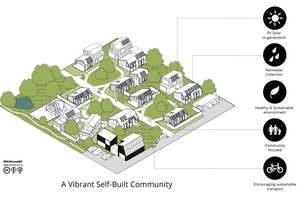
ML: My training was in product and industrial design but then I got into construction, mostly in the UK. After that I went into digital technology and spent about 18 years doing a couple of hundred innovative digital technology and internet-related projects all around the world. I also set up a meditation centre in Christchurch!
AMH: What have been some of the biggest challenges thus far?
DS: You don’t know what you don’t know, and this is a very complex project with many unknowns! Getting access to the materials that we need is certainly a challenge, as is dealing with the supply chain that controls them.
ML: We’re also operating with a damaged infrastructure here in Christchurch. The project came out of disaster and the whole region has been hit by a series of events that has made operating here difficult.
DS: The biggest one for me is the entrenched attitudes of “we’ve always done it this way and we’ve only got enough money to do this.” Everyone in Christchurch has been too busy rebuilding to a 20th century script to bother much about innovation that creates new and different solutions. There are bits of incremental innovation and occasionally the introduction of something new from overseas, but it’s not the radical change that drives economic change.
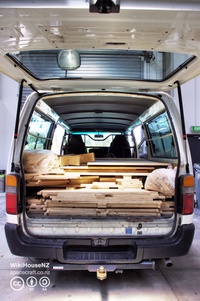
ML: New Zealand is only really starting to understand this middle sector of social enterprise so there isn’t really a funding structure, especially not for large scale projects. The lack of resources means we’ve really struggled to make the progress we would have liked. It’s understandable that people are very cautious, because it is a hugely ambitious project, but at the same time if you’re not careful, projects like ours just slip between the cracks.
AMH: How can we better encourage architects, designers etc to access and use the WikiHouse approach?
DS: That’s what the WikiHouse Global Foundation is focusing on – how do we get users more globally engaged to share solutions? One of the challenges for the global open project is getting the tools into the hands of people and to be able to share information as easily as the software developers do at the moment.
WikiHouse are always seeking contributors all around the world who can add their expertise into helping us collectively build out this embryonic platform. We currently need help in areas such as parametric and computational design; 3D-modelling and CAM manufacture workflows – initially using existing tools such as Rhino3d and Grasshopper – and developing over time a customised set of web-based design interfaces.
AMH: What drives you personally to put so much work, time and energy into the project?
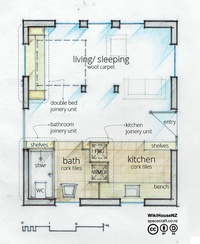
DS: To explore new ways of thinking and doing is what really drives me. We want to try and cultivate a culture of experimentation and risk taking, but within the bounds of being sustainable, so it’s about balancing those two competing ideologies.
I think that in the last 30 years especially the commercial outcomes have become the main driver. For me it’s about trying to bring all that back into balance and build a community around it. We’ve met some great people along the way and they are really the most important thing in this project.
ML: It’s about empowering people to better help themselves and each other, because I think a lot of the time it feels like that has gone. In the post-quake situation, most people felt that they couldn’t do anything about the situation. They felt disempowered by the various bureaucratic and commercial structures.
DS: After the earthquakes, you felt the community pulling together despite the authorities. In a disaster situation you do get the best of humanity in that sense, so we wanted to capture that spirit. How do we keep it alive? How do we make it become the norm again?
AMH: How do you envisage platforms like WikiHouse feeding back into communities in New Zealand?
DS: Just down the road from the workshop we ship out raw logs to China and they come back as really cheap furniture that falls apart in two or three years. Imagine if we diverted those logs into a factory that peels them and creates plywood or engineered timber out of them, which then goes to another facility like a WikiLab that creates high performance houses out of them. They then go out into the community, which creates jobs around providing those houses.
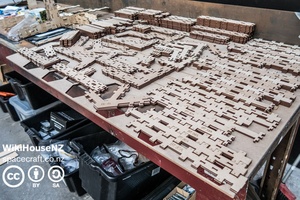
I see such a compelling case for economic change, let alone environmental, while also empowering people. It’s holistic thinking, based on permaculture principles where everything has three uses. Don’t waste things, recycle them, have an end of life for them. Those ideas have been percolating for quite a few decades but no-one has ever been able to put them together in a way that can have the scale and impact that we’re trying to achieve with WikiHouse.
ML: It’s about quality of life in the communities. It’s also about resilience. People talk a lot about resilience but actually a lot of the time they’re talking about stoicism, they’re not talking about resilience. The WikiHouse platform builds real resilience, because a community not only has to have the tools to be able to solve their own problems, but they also need to feel confident about tackling them.
If a community builds their own house, even if it’s just one house, they walk past that every day and look at it and think, “if we can do this, what else can we do?”. It’s about confidence in building those connections between people and giving them better tools so they’re not as dependent on the system when difficulties strike.
AMH: What are some of your ultimate goals for WikiHouse in New Zealand?
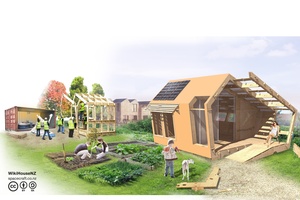
DS: The first goal is to become self-sustaining by producing houses that people want to buy, which then funds the ongoing R&D. We don’t really want to set any upper limit for that. We’d love to see every house built on the WikiHouse platform – we don’t have to necessarily build it ourselves, but if we can create a platform that changes the way houses are built and who gets to build them then that’s fantastic.
Community-led development is what we’re really aiming for – empowering communities to be the change makers in their regions and then benefit from that. The housing is really the catalyst for trying to achieve that change.
ML: Ultimately we want to create empowered citizens who deliver a much healthier, more affordable sustainable built environment. We often say we build communities more than housing, so the housing is a by-product but the platform actually helps transform our communities so we have more rewarding lives.
If you are interested in being involved with or supporting the WikiHouse New Zealand project, get in touch with Danny here.

